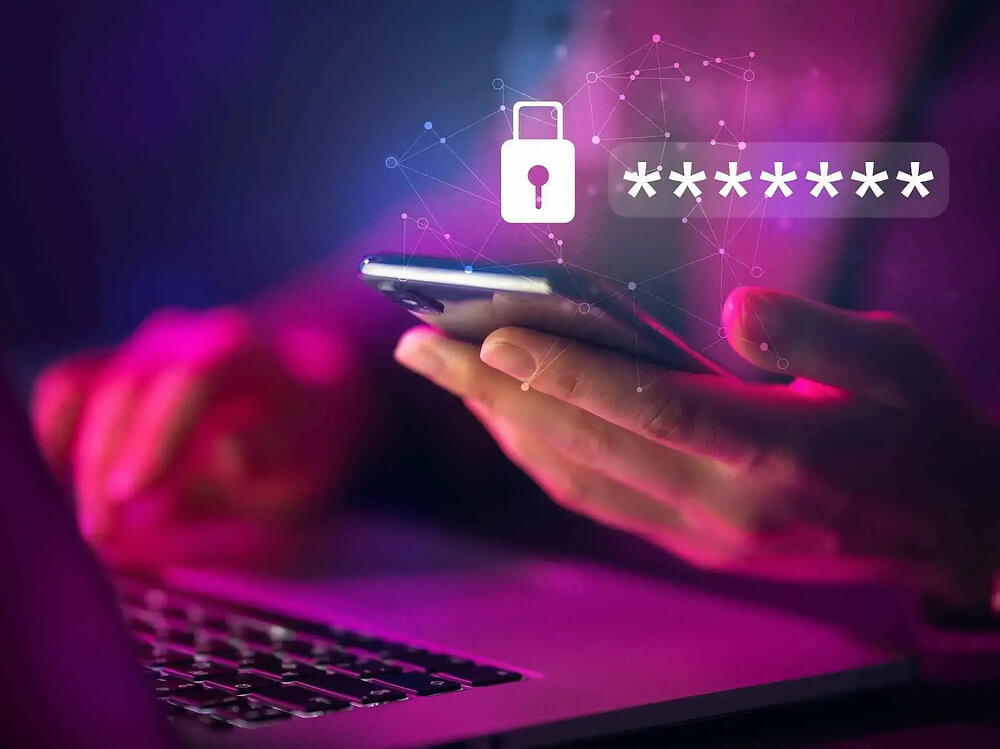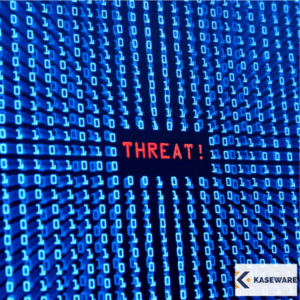
Insider Threats in the Age of Remote Work: Unique Challenges and Solutions for Remote Environments
The global shift to remote work, accelerated by the Covid-19 pandemic, has transformed the business landscape. While remote work offers many benefits like flexibility for employees who enjoy optimal work-life balance and greater productivity due to less workplace distractions, it also introduces significant cybersecurity challenges—particularly around insider threats.
This article will explore the effect remote work has had on cybersecurity by focusing on insider threats for remote jobs, the unique challenges they pose, and effective solutions for safeguarding remote work environments.
The Remote Work Revolution and Cybersecurity Risks
Remote work has surged in popularity, with a significant percentage of the global workforce now operating from home.
According to a study by FlexJobs, the number of people working remotely has grown by 159% since 2005, with a dramatic increase during the pandemic. However, this shift has also led to a rise in cybersecurity incidents. The FBI reported a 300% increase in cybercrimes since the pandemic began, highlighting the vulnerabilities in remote work setups.
Statistics Highlighting the Rise in Cybersecurity Threats
- Recent surveys found that 20% of organizations experienced a security breach as a result of a remote worker.
- According to IBM, the average cost of a data breach in 2024 is $4.88 million, with remote work being a significant factor in the increased costs. This is not only a 10% increase in breaches since 2023, it’s the highest percentage of breaches recorded.
- The Ponemon Institute reported that insider threats have increased by 67% since 2022, with remote work environments being particularly susceptible.
Understanding Insider Threats
Insider threats involve malicious activities carried out by individuals within an organization, such as employees, contractors, or business partners. These threats can be intentional, such as theft of intellectual property, or unintentional, such as accidental data breaches.
Remote work exacerbates these threats due to several key factors:
Lack of Physical Oversight
In a traditional office setting, physical oversight and supervision act as natural deterrents to malicious activities. Managers and colleagues can observe behaviors and intervene when something seems off.
However, remote work eliminates this layer of security. Without the ability to physically monitor employees, it becomes significantly easier for insiders to engage in harmful activities without immediate detection. The absence of face-to-face interactions can also lead to a sense of isolation and disconnection, which may provoke malicious insiders to act.
Unsecured Home Networks
Corporate environments typically have effective security measures in place, including firewalls, intrusion detection systems, and regular security audits.
In stark contrast, many remote workers rely on personal devices and home networks that lack these advanced security features. Home networks are often not configured with the same level of security, making them more susceptible to breaches.
Cybercriminals can exploit these vulnerabilities to gain unauthorized access to corporate resources, using tactics like network sniffing or exploiting weak Wi-Fi passwords.
Increased Phishing Attacks
Remote workers are prime targets for phishing attacks. Cybercriminals craft convincing emails and messages that appear to come from legitimate sources, tricking employees into revealing sensitive information or downloading malicious software.
The isolation of remote work means employees may not have immediate access to IT support or colleagues to verify suspicious communications. This makes it easier for cybercriminals to succeed in their phishing attempts, leading to compromised accounts and data breaches.
Access Control Issues
Managing and monitoring access to sensitive information becomes more complex in a remote work setup. Employees need access to various resources to perform their duties, but ensuring that this access is appropriately restricted and monitored is challenging.
Insiders with legitimate access may misuse their privileges, intentionally or unintentionally, leading to data leaks or unauthorized transactions. Additionally, remote work environments make it harder to enforce strict access controls and monitor for unusual activities, increasing the risk of insider threats.
Methods Cybercriminals Use to Exploit Remote Workers
Remote work has created new opportunities for cybercriminals to target employees outside the protective perimeter of the office environment. By exploiting vulnerabilities in home networks and leveraging sophisticated social engineering tactics, cybercriminals have devised several methods to breach security and access sensitive information.
Understanding these methods is crucial for both employees and organizations to implement effective countermeasures. Here are some of the most common tactics used by cybercriminals to exploit remote workers:
Phishing and Social Engineering
Phishing emails and social engineering tactics are designed to deceive remote workers into disclosing confidential information. These attacks often impersonate trusted sources like supervisors, IT departments, or reputable companies.
Cybercriminals may request login credentials, financial information, or prompt employees to click on malicious links. Remote employees are more vulnerable to these types of tactics since they may not have immediate access to verification resources or immediate contact with IT departments.
Malware and Ransomware
Remote workers’ personal devices and home networks are more vulnerable to malware and ransomware attacks. Cybercriminals can deploy malicious software through email attachments, infected websites, or unauthorized downloads. Once inside a system, malware can exfiltrate data, spy on user activities, or encrypt files, demanding a ransom for their release.
The lack of advanced security measures on personal devices makes it easier for these attacks to succeed, potentially compromising sensitive corporate data.
Unauthorized Access
Weak passwords and the absence of multi-factor authentication (MFA) can lead to unauthorized access to corporate systems. Cybercriminals can exploit these weaknesses using brute force attacks or by purchasing compromised credentials from dark web marketplaces. Once they gain access, they can move laterally within the network, exfiltrate data, or disrupt operations.
Ensuring that remote workers use strong, unique passwords and enabling MFA are critical steps in preventing unauthorized access.
Solutions for Mitigating Insider Threats in Remote Work Environments
Mitigating insider threats in remote work environments requires a multifaceted approach that combines employee vigilance with effective organizational policies. Both employees and organizations play crucial roles in maintaining security and preventing breaches. Implementing effective solutions can significantly reduce the risk of insider threats and ensure a safer remote work setup.
Solutions that Mitigate Insider Threats for Remote Employees
Here are key strategies that employees can adopt to enhance security and protect against insider threats:
Awareness and Training
Regular cybersecurity training and awareness programs are essential for helping remote workers recognize and respond to potential threats. Employees should be educated on identifying phishing attempts, securing their home networks, and following best practices for data protection. Training should be ongoing and updated to reflect the latest threats and security practices.
Secure Communication Tools
Utilizing encrypted communication tools and virtual private networks (VPNs) can secure remote communications and data transfers. Encrypted tools ensure that sensitive information shared between employees is protected from eavesdropping or interception by cybercriminals.
Strong Passwords and MFA
Implementing strong password policies and multi-factor authentication (MFA) significantly enhances security. Employees should use complex, unique passwords for different accounts and enable MFA tools wherever possible. Implementing MFA safeguards add an additional layer of security, making it harder for cybercriminals to gain unauthorized access even if they obtain login credentials.
Solutions for Organizations
In addition to implementing the remote employee-related policies and initiatives above, organizations can take the following measures to mitigate insider threats:
Access Management
Implementing strict access controls and regularly reviewing user permissions ensures that remote and onsite employees only have access to the information they need for their roles.
Access should be granted based on the principle of least privilege, and any changes in employee roles or responsibilities should trigger an immediate review of their access rights.
Monitoring and Logging
Using monitoring tools to track user activity and detect unusual or suspicious behavior is crucial for identifying potential insider threats in remote work settings.
Organizations should regularly review logs to identify patterns that may indicate malicious activities, such as repeated failed login attempts or access to sensitive data outside of normal working hours.
Data Encryption
Encrypting sensitive data both at rest and in transit protects it from unauthorized access.
Encryption ensures that even if data is intercepted or accessed by unauthorized parties, it remains unreadable and secure. Organizations should implement encryption protocols for all sensitive information stored on servers, databases, and endpoints.
Incident Response Plan
Developing and maintaining an incident response plan that includes procedures for detecting, responding to, and mitigating insider threats is essential.
This plan should outline specific steps to take in the event of a security breach, including identifying the source of the threat, containing the breach, and restoring normal operations.
Regularly updating and testing the plan ensures its effectiveness and prepares the organization for potential incidents.
Stay Ahead of Insider Threats and Secure of Your Remote Work Initiatives
The shift to remote work has introduced new challenges in managing insider threats, but with the right strategies and tools, organizations can effectively mitigate these risks.
By fostering a culture of security awareness, implementing effective security measures, and leveraging advanced monitoring tools, businesses can protect their remote workforce from insider threats.
For a comprehensive guide on addressing insider threats, we encourage you to download our 2024 Insider Threat Guide. This guide provides in-depth insights and practical solutions to safeguard your organization against insider threats in both onsite and remote work environments.
Guide to Creating a Proactive Insider Threat Strategy
Everything You Need to Deter, Detect, & Mitigate Risk from Insider Threats









